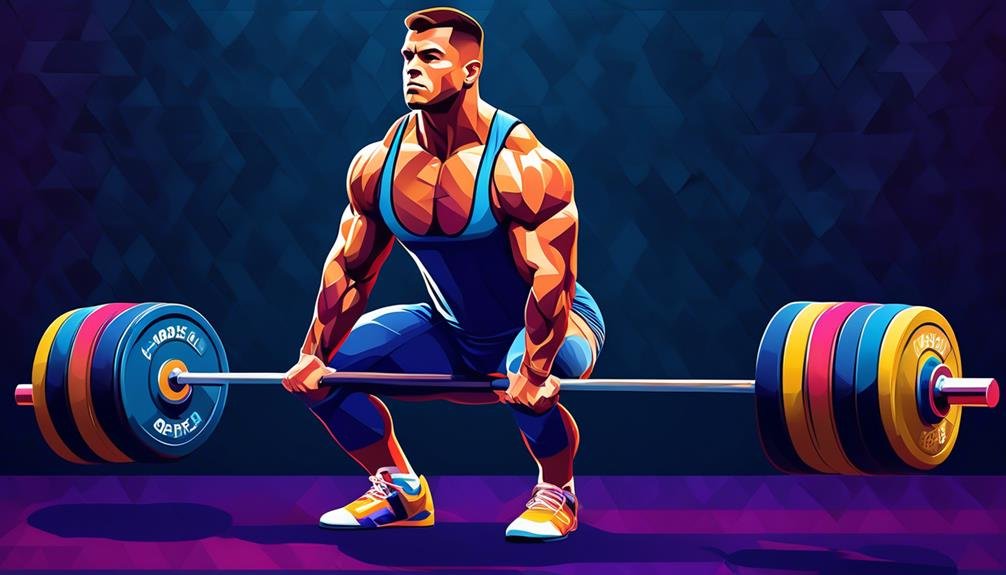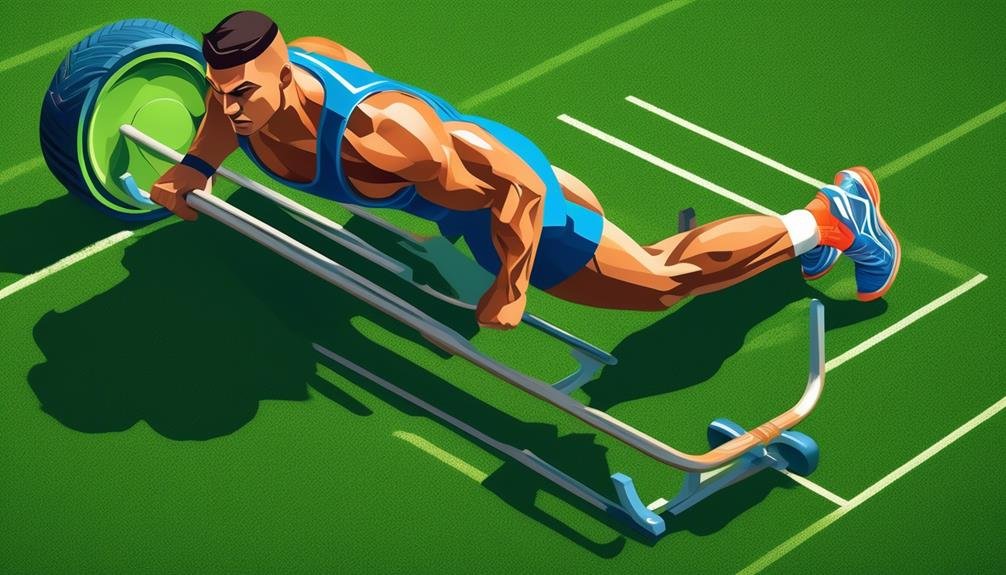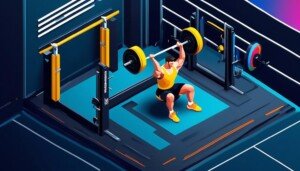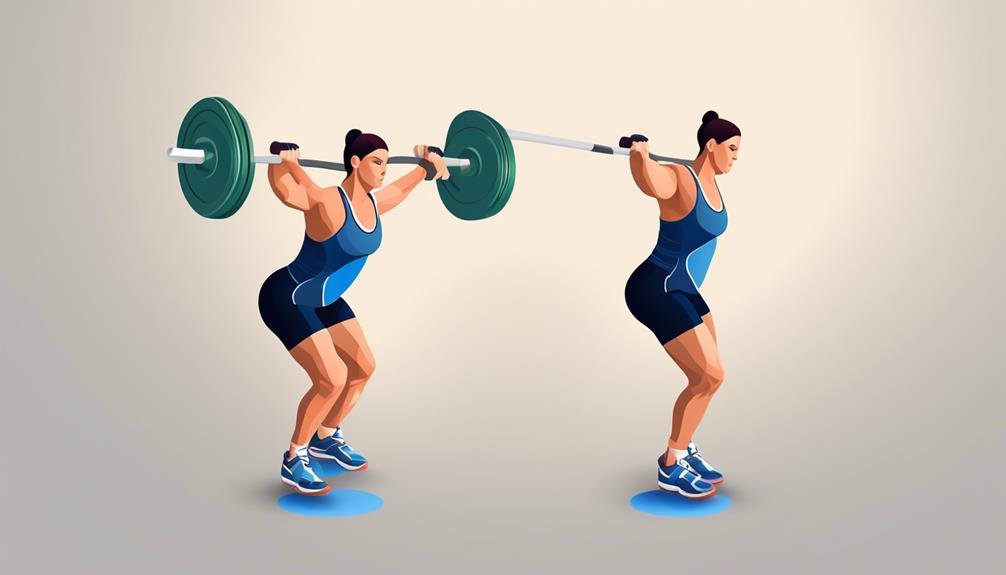Are you tired of feeling unsure about your form and technique when it comes to lifts like squats and deadlifts? Well, fret no more! In this discussion, we will explore the proper form and technique for these exercises, giving you the confidence and knowledge you need to perform them correctly and effectively.
Whether you're a beginner looking to learn the basics or an experienced lifter wanting to fine-tune your technique, we've got you covered. So, let's dive in and uncover the secrets to mastering squats and deadlifts!
Key Takeaways
- Position your feet shoulder-width apart with toes slightly pointed outward for proper squat form.
- Keep your back straight and chest up throughout the squat movement.
- Lower your body by sitting back into an imaginary chair and aim to go below parallel for effective engagement of lower body muscles.
- When performing deadlifts, make sure to position your mid-foot under the bar, keep your back flat and maintain a neutral spine, and drive your hips forward while keeping your back flat to initiate the lift.
Squat Form Basics
To perform squats with proper form and technique, start by positioning your feet shoulder-width apart and toes slightly pointed outward. This stance provides a stable foundation for the lift.
Next, grip the bar with your hands slightly wider than shoulder-width apart and place it across your upper back, resting it on your traps. Make sure to keep your back straight and your chest up throughout the movement.
As you begin to lower your body, imagine sitting back into an imaginary chair. Ensure that your knees track in line with your toes to prevent any undue stress on your joints. As you lower, focus on keeping your weight on your heels and mid-foot, as this will help engage your glutes and hamstrings.
It's important to lower your hips below parallel, which means your thighs should be parallel to the ground or slightly lower. This will maximize the benefits of the squat and engage your lower body muscles effectively.
Finally, push through your heels and mid-foot to return to a standing position, fully extending your hips.
Key Technique Tips for Squats
By following these technique tips, you can perform squats with proper form and maximize the benefits of this exercise. Remember to engage your core and drive through your heels to return to the starting position, keeping your chest up. Practice these tips consistently to improve your squatting technique and avoid injury.
Proper form and technique are essential for lifts like squats and deadlifts. By maintaining a neutral spine, keeping your chest up and back straight, you can ensure that you're performing squats correctly. Pay attention to the following key technique tips to enhance your squatting form and technique:
- Keep your feet shoulder-width apart and toes slightly turned out to maintain stability and proper alignment. This will provide a solid base for your squat.
- When descending, push your hips back and bend your knees while keeping your weight on your heels. This will help activate the correct muscles and prevent excessive stress on your knees.
- Lower your hips until your thighs are parallel to the ground. This will ensure that you achieve a full range of motion and engage your leg muscles effectively.
Muscles Targeted in Squats
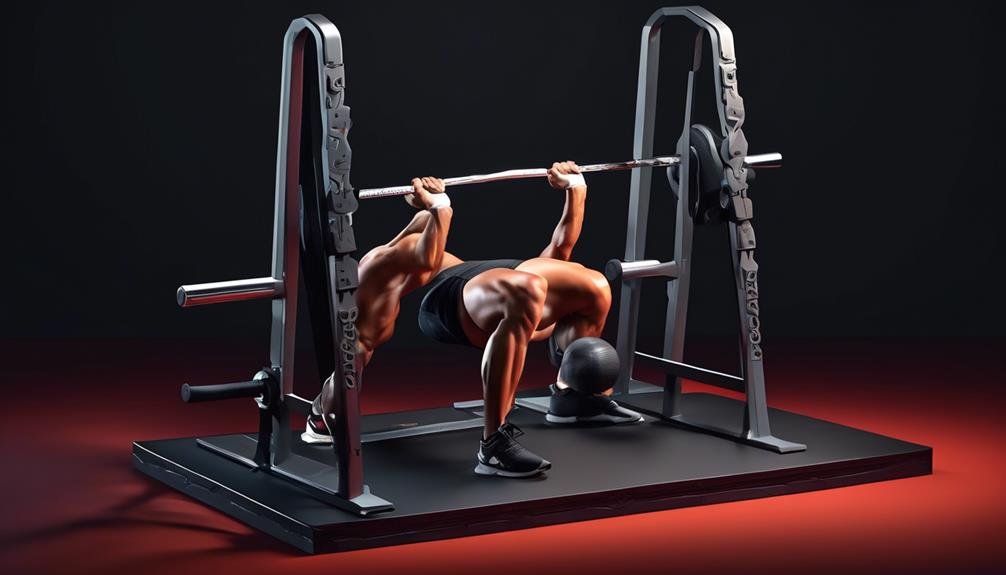
Continuing our discussion on proper form and technique for squats, let's explore the muscles targeted in this exercise.
Squats are a compound movement that work multiple muscle groups simultaneously, making them incredibly effective for building strength and muscle mass.
First and foremost, squats primarily target the muscles in your lower body. Your legs, including the quadriceps and hamstrings, are heavily engaged during squats. The quadriceps, located at the front of your thighs, are responsible for extending your knees as you rise from the squat position. The hamstrings, located at the back of your thighs, assist in knee extension and also play a role in stabilizing your hips.
Speaking of hips, squats also target the muscles in this area. Your glutes, or buttocks, are the main muscles activated during squats. They work to extend your hips and propel you upward during the movement. Additionally, your hip adductors, abductors, and flexors are involved in stabilizing your hips throughout the exercise.
Lastly, squats engage your lower back muscles. These muscles, including the erector spinae, help maintain an upright posture and stabilize your spine during the squat movement.
Common Mistakes in Squat Form
One common mistake to avoid when performing squats is allowing your knees to cave inwards instead of tracking over your toes. This happens when the muscles responsible for maintaining proper alignment of the knees are weak or not activated properly. When your knees cave in, it puts excessive stress on the ligaments and tendons surrounding the knee joint, increasing the risk of injury.
Here are three other common mistakes to watch out for when it comes to squat form:
- Rounding the lower back instead of maintaining a neutral spine throughout the movement. This can lead to lower back pain and injury. Remember to engage your core muscles and keep your back straight throughout the entire squat.
- Not reaching proper depth. It's important to descend low enough so that your hips go below your knees. Failing to reach proper depth limits the effectiveness of the exercise and can lead to muscle imbalances.
- Failing to keep the chest up and back tight. This leads to poor posture and potential strain on the lower back. Focus on keeping your chest lifted and your shoulder blades squeezed together to maintain a strong and stable upper body position.
Deadlift Form Essentials
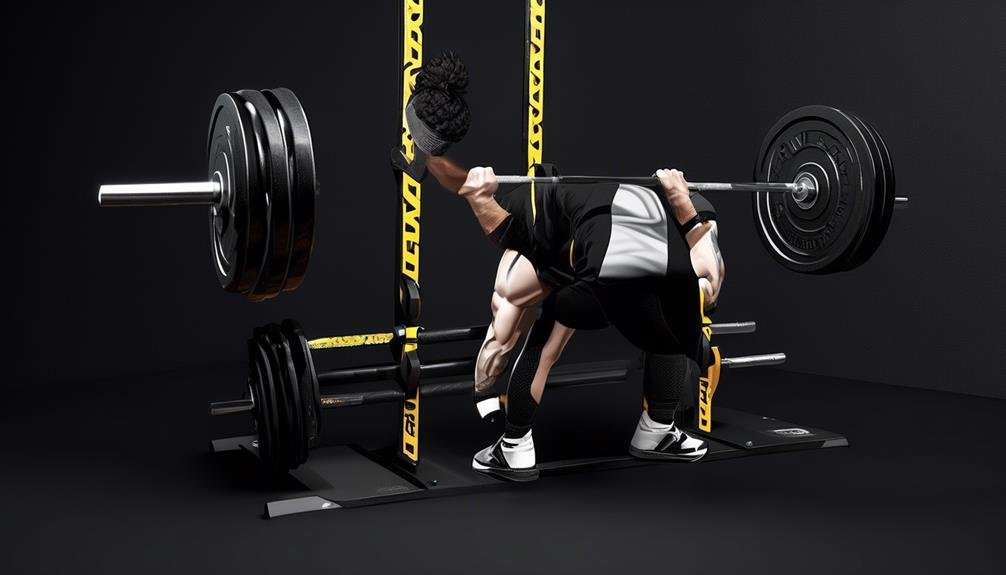
To properly execute a deadlift, position yourself with your mid-foot under the bar, ensuring that your heels are hip-width apart and your toes are turned out about 15°. This is the proper deadlift form that will help you perform the exercise safely and effectively.
Once you're in the correct starting position, lower the bar by bending your knees and pushing your hips back. Keep your back flat and maintain a neutral spine throughout the movement. Make sure to engage your core and keep your chest up.
As you lower the bar, focus on driving your feet through the floor. This will activate the muscles in your legs and help you maintain balance and stability. Grip the bar with a shoulder-width grip and keep your arms vertical.
When you're ready to lift, initiate the movement by driving your hips forward while keeping your back flat. Your hips should rise before your shoulders, allowing your legs to do the majority of the work.
Throughout the lift, focus on the muscles working, including your hamstrings, glutes, quads, calves, back muscles, and traps. Avoid rounding your lower back or excessively arching it.
Techniques for Proper Deadlifts
To perform proper deadlifts, start by positioning yourself with your mid-foot under the bar, ensuring that your heels are hip-width apart and your toes are turned out about 15°.
Here are some techniques to help you perform deadlifts with proper form:
- Keep your knees in line with your feet throughout the movement. This will help you engage the correct muscles and maintain stability.
- Keep the bar close to your body throughout the lift. This will help you maintain control and prevent strain on your lower back.
- Maintain a neutral spine by keeping your back straight throughout the lift. Avoid rounding your back or arching it excessively.
- Engage your glutes and hamstrings by pushing your hips back first before lifting the weight. This will help you generate power and protect your lower back.
- Ensure that the weight isn't too far away from your body. Keeping it close will help you maintain balance and control.
Avoiding Common Deadlift Mistakes
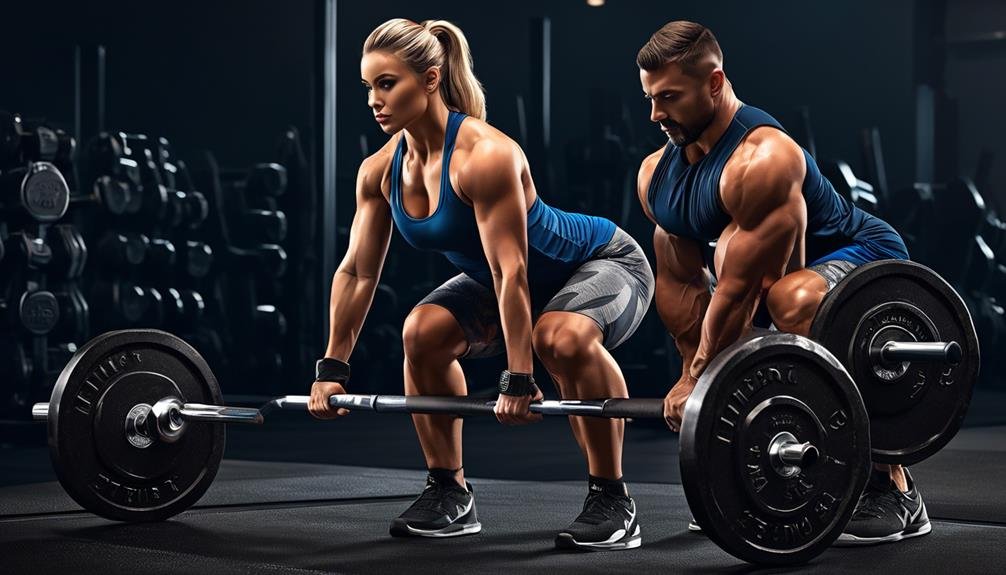
When performing deadlifts, it's crucial to avoid common mistakes that can lead to injury and hinder your progress. To maintain proper form and technique, there are a few key points to keep in mind.
Firstly, it's important to keep a neutral lower back throughout the movement. This helps prevent injury and ensures even pressure on your spinal discs. Avoid rounding your lower back, especially when lifting heavy weights, as this can be dangerous for your spine.
Another common mistake to avoid is bouncing the weight off the floor or lifting top-down. Each rep should start from a dead stop on the floor, ensuring that the weight touches the floor between reps. This not only maintains proper form and technique but also provides a more effective workout.
Lastly, it's crucial to maintain the correct form throughout the entire lift. This means keeping your shoulders back, chest up, and engaging your core muscles. By doing so, you can maximize the benefits of the deadlift while minimizing the risk of injury.
Frequently Asked Questions
What Is the Proper Deadlift Technique?
To perform a proper deadlift, start with your mid-foot under the bar, feet hip-width apart. Keep your lower back neutral and avoid rounding it. Engage your lower body and back muscles to lift with your legs and hips, not your arms. Breathe properly for core stability.
How to Do Squats and Deadlifts?
To perform squats and deadlifts, start by setting up with proper form. For squats, keep your feet shoulder-width apart and lower your hips until your thighs are parallel to the ground. For deadlifts, stand with your feet hip-width apart and lift the barbell from the floor using your legs and back muscles.
What Is the Proper Deadlift Form for Physical Therapy?
Stand with your mid-foot under the bar, heels hip-width apart, and grip the bar with a shoulder-width grip. To lift, take a big breath and stand up. Remember, proper form is crucial for safety and effectiveness.
How Do You Alternate Squats and Deadlifts?
To alternate squats and deadlifts, start with deadlifts using proper form and technique. Then, move on to squats, maintaining consistent foot position and hip width. Ensure a neutral spine and engage core stability throughout both exercises.
Conclusion
In conclusion, maintaining proper form and technique is essential for performing squats and deadlifts safely and effectively.
Remember to keep your chest up, back straight, and push through your heels when performing squats.
When deadlifting, ensure a shoulder-width grip, and drive through your heels while extending your hips and knees.
By following these guidelines, you can prevent injuries and maximize the benefits of these exercises.


